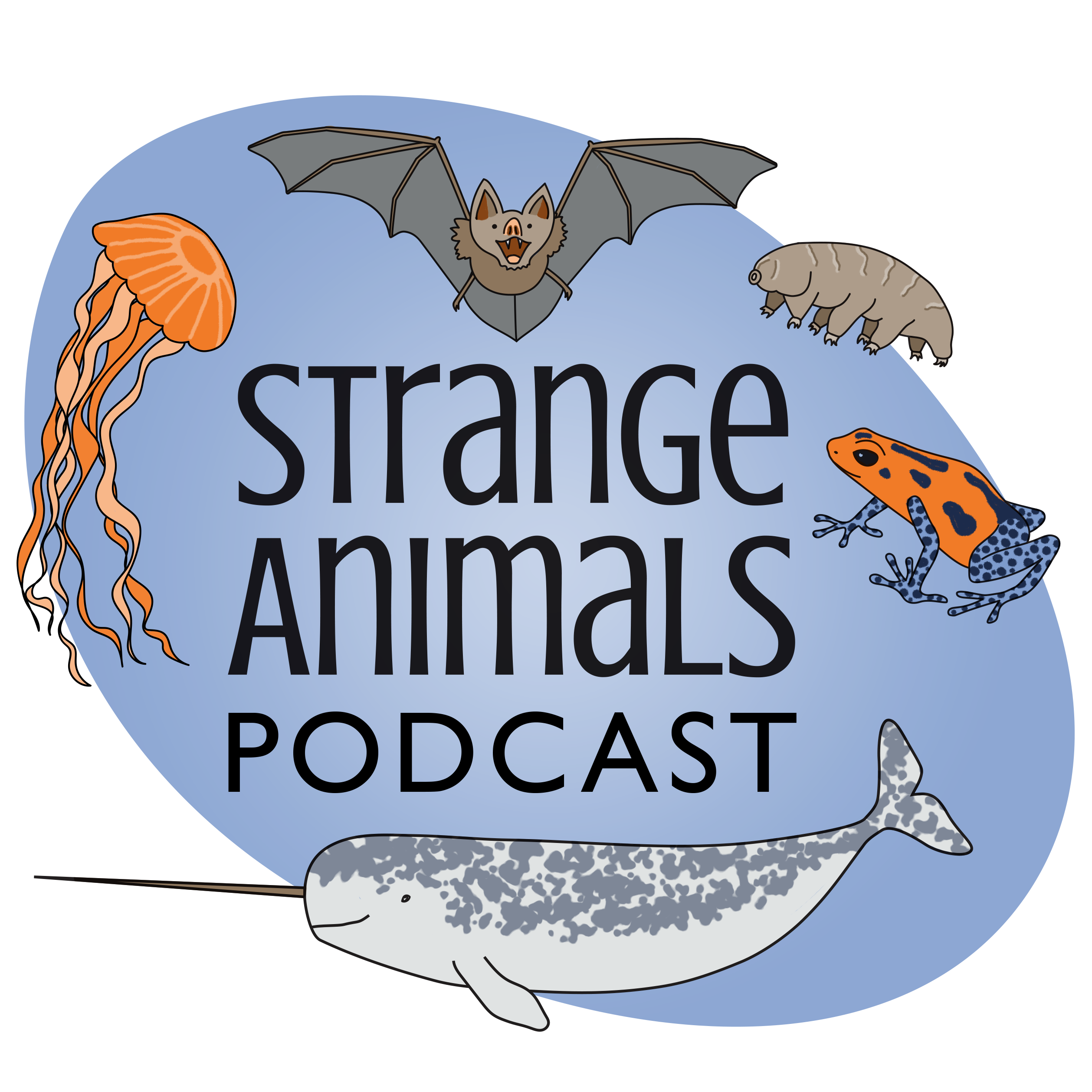Episode 128: Weird Pigs

If you think pigs are just cute little pink animals that go oink, you definitely need to listen to this week's episode!\n\nFurther listening (two unlocked Patreon episodes):\n\nWeird teeth featuring the babirusa\n\nPeccaries\n\nFurther reading:\n\nMore about the swamp pig of Hungary\n\nAn adorable pygmy hog:\n\n\n\nA Javan warty pig, looking magnificent:\n\n\n\nAn actual warthog, not a cartoon warthog, just sayin:\n\n\n\nA giant forest hog, looking kind of similar to the warthog but bigger:\n\n\n\nA wild boar looking surprisingly fluffy:\n\n\n\nA wild boar piglet, awwww:\n\n\n\nShow transcript:\n\nWelcome to Strange Animals Podcast. I\u2019m your host, Kate Shaw.\n\nThis week we\u2019re going to look at an animal all of us know as the thing that goes oink-oink. Some people eat them, some people will absolutely not eat them, some people keep them as pets, but everybody knows what a pig is. But you might not know about these weird and sometimes mysterious pigs!\n\nI\u2019ve unlocked two Patreon bonus episodes about pigs so that anyone can listen to them. I recently posted a bonus episode about peccaries, and there\u2019s an older bonus episode about some animals with weird teeth that features the babirusa. Check the show notes for links to those episodes. You don\u2019t need a Patreon login, just click on the link and use your browser to listen.\n\nThere are two groups of piglike animals, known as the New World pigs found throughout the Americas, and the Old World pigs from Africa and Eurasia. Domestic pigs are Old World pigs, although escaped domestic pigs live as feral animals in many parts of the world. New World and Old World pigs are related, but not closely. They used to be classified together in the pig family, Suidae, but the New World pigs now have their own family, Tayassuidae.\n\nAll these pigs have one thing in common: a snout that ends in a disc with nostrils at the end. You know, a pig snout. The disc is made of cartilage and is usually extremely tough, with leathery skin, but it\u2019s also full of nerve endings so the pig can tell exactly what it\u2019s touching with its snout. Pigs use their snouts to root in the ground, digging up plant material and small animals like grubs and worms. You know why pigs sometimes have a ring in their nose, through the nostrils? This stops a pig from rooting, because the ring gets caught on rocks and things and pulls at the sensitive nostrils.\n\nMale pigs of all kinds also have tusks, or teeth that grow long enough that they extend out of the mouth. Plus pigs have small, thin tails, bulky bodies with relatively slender legs, cloven hooves with two dew claws on each foot, and small eyes. The babies of wild pig species are usually furry with stripes the length of their body.\n\nPigs are surprisingly intelligent and can learn all kinds of tricks, just like dogs. And while a domestic pig that\u2019s been handled often since it was a piglet will make a good pet, wild pigs and pigs that aren\u2019t used to people can be dangerous. Pigs will eat people, which seems only fair since people eat so many pigs. Pigs will eat anything, in fact. They\u2019re omnivores, just like humans are. Pigs also carry a lot of parasites and diseases that humans can catch too.\n\nLet\u2019s look at some of the more unusual wild pigs out there, starting with the pygmy hog. The pygmy hog isn\u2019t actually very closely related to most pigs. It\u2019s much smaller than most pig species, only about a foot high, or 30 cm. It\u2019s brown in color with short hair and rounded ears, and it lives in India although it used to be much more widespread.\n\nThe pygmy hog lives in small family groups, usually females and their young. Males are more solitary. In cold weather the pygmy hog digs a nest to sleep in, rooting out a small trough in the dirt with its snout and lining it with grass. This is adorable.\n\nThe pygmy hog was first described in 1847 but by the 1960s it was supposedly extinct. But a population was rediscovered in 1971 living in a wildlife sanctuary.